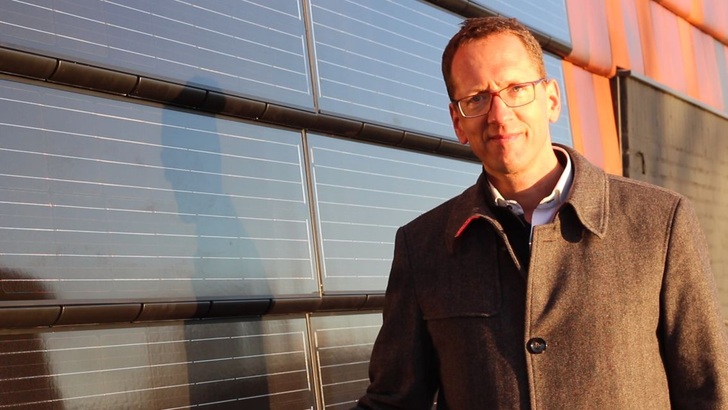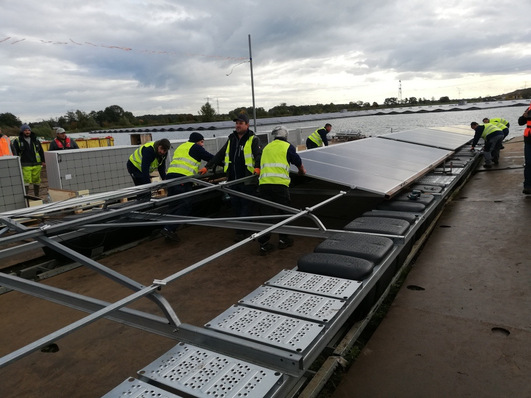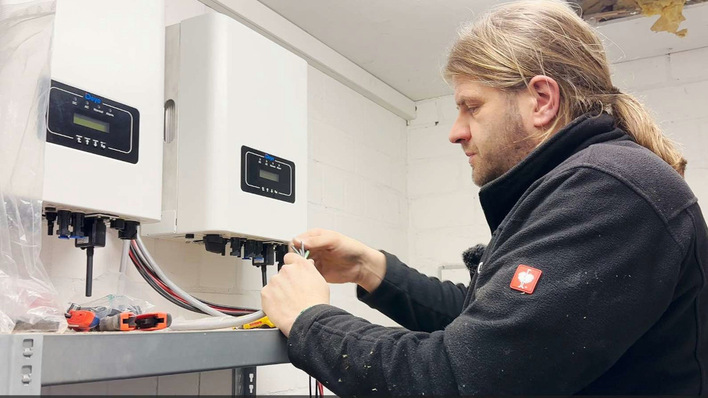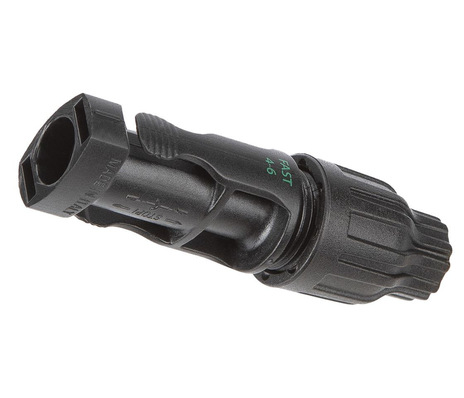Solar roof tiles have been known in the PV industry for some time now, yet they lead a niche existence. How would you assess the interest from solar customers?
Ulrich Nelskamp: We had the online search patterns of potential prospective customers investigated. The results showed that there is a great deal of interest in solar roof tiles. Measurements have shown that it was about ten times higher than for our classic roof products. Although it is not possible to estimate from this evaluation how many prospective customers are actually planning to install them or whether this is purely an interest in information, it can nevertheless be said that people are looking for PV in forms other than conventional, mostly mounted solar installations.
To what do you attribute this?
On the one hand, Tesla's marketing campaign, who took over Solar City with their photovoltaic bitumen shingles and intend to spread them in the US. Tesla made a great announcement about this, but it was poorly implemented in Germany. The bitumen shingles commonly used in America are almost unknown here when it comes to building houses. Tesla's product was not adapted to the requirements of the German market. On the other hand there is the desire of building owners and planners for aesthetic solar systems, where the focus is not only on economic efficiency.
At least, it got people talking about it…
Sure. And since we provide smart products to the German and European market, that helped us. It has created a gap in the market, where we can offer aesthetic roof-based systems to solar customers. With our system G10PV we are opening up a new customer base.
How much of your turnover is generated from solar products?
As you know, we have a variety of systems on offer. And that includes solar-thermic and roof-based products that combine PV and solar-thermics. In 2000, we first got interested in solar; and in 2008, we brought our first product to market. Today, solar products make up about two or three percent of our business.
Why are you not growing faster? What do you see by way of obstacles?
We originated in roofing rather than solar. Our traditional target groups are roofing contractors and carpenters. In southern Germany, it tends to be more the carpenters, and in the north more the roofing trade. Carpenters are more involved in pitched roofs and the structural supports, whereas roofers also see flat roofs as a part of their domain. However, both groups do not like handling cables – or the pipes that come with solar-thermal systems.
So, solar engineers alone are not enough to provide market access?
We have not really developed that target group, the same is true for architects. Quite a few solar engineers go up to the roof to install PV arrays there. Any rethinking among roofing contractors or carpenters is also hampered by the currently very favourable order situation, also in the classic roofing trades.
What will it take in the future for the roofing trade to take solar systems as much for granted as it does conventional roof tiles or shingles today?
Roofing contractors value high-quality products very highly. Many actually reject the commonly used solar mounting roof hooks. And our solar roof tiles are a product at a level of quality that they expect from our other products. That allows us to give our customers what they want and need. On the other hand, when solar engineers present these solar roof tiles to their customers, such an installation usually does not get built, and an on-roof array is preferred.
You were talking about convincing solar customers with aesthetic roof products. What did you mean by that?
Roofs are very much about ow they look, i.e. the right colour or surface texture. Solar roof tiles come on top of the roof as a whole and have to match and be aesthetically pleasing without calling too much attention to themselves. Architects tend to very much focus on the lines of a roof and want it to look like a single unit. Many of the systems that the solar industry has to offer generally do not look very nice. Or they still are much too expensive.
Talking of prices: How much would a customer have to expect to be paying for a roof covered in your PV roof tiles?
If we are talking of the end customer, that is to say the customer of the solar engineer, roofing contractor or master carpenter, a rough estimate for a kilowatt of our G10PVs would come to a net price of 2,300 euros. Of course, that is more expensive than a simple on-roof system, which can also be had on the classic end customer market for 1,300 euros per kilowatt. But: With our system you get the look of a professionally built tiled roof and the cladding as well.
Where have you built the most projects so far?
By a wide margin in single family homes; all were installations of less than ten kilowatts. Only a few outliers were different. We mostly sell our G10PVs in Germany and the Netherlands. In Alkmaar, we installed the solar tiles across the façade of a supermarket. The building has a conventional roof-top solar array on the roof. It was important to the owners to demonstrate, and quite openly so, that they care about the environment. In Alkmaar, we combined conventional flat G10 tiles and the solar versions all in one façade.
When did you first launch the G10PV?
We presented it for the first time at the Intersolar 2017 and started distribution in November of that year. To date, we have used them in about 25 projects, which is quite alright.
So far, it has been mostly private customers who decide to have their roofs covered in solar roof tiles. How can you make the leap into the commercial market?
We need the architects and building societies on board. They are key target groups for us. Awareness in the Netherlands seems to be growing particularly strongly, because they have different building regulations. And construction trade fairs there are much more focused on design and towards professional customers than here in Germany. There we have had a great response to our G10PVs.
On top of aesthetics; what do architects need?
They need solar roof tiles that are suitable for a modern new-built as much as for the refurbishment of an existing roof or for listed buildings. We produce many roof tiles that are designed to meet the requirements of building conservation. We are currently planning façades with our solar tiles, set up as rear-ventilated curtain wall systems. We want it to be inexpensive enough to be considered for a wider range of applications. Price-wise, it will be around 250 to 350 euros per square metre, which is similar to conventional building materials. However, these do not generate clean solar power. I also see solar carports as a possible application. (HS)
Keep up with innovation in PV! Watch our PV Guided Tours at The Smarter E Europe in Munich:
https://www.pveurope.eu/Videos/pv-Guided-Tours-videos-2018
Stay informed, get our newsletter twice a week.
Register here: https://www.pveurope.eu/Newsletter
Read more about solar modules.
Read more about solar mounting systems.
Read more about solar energy storage.








